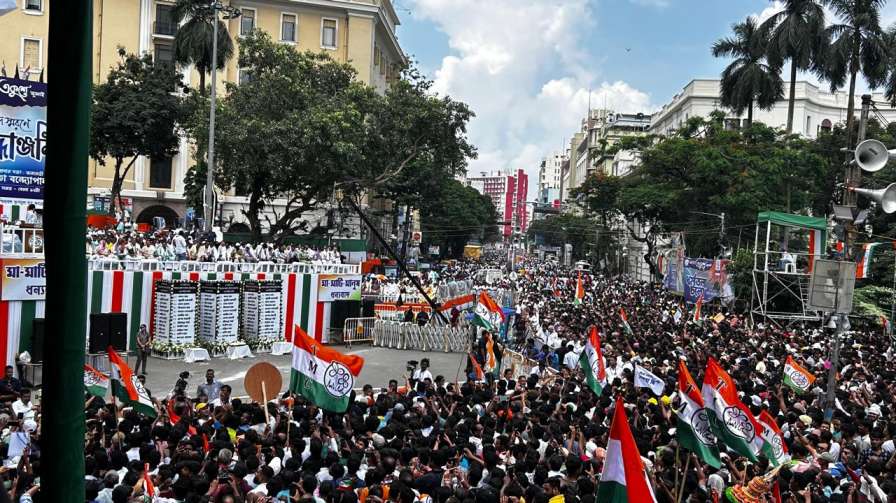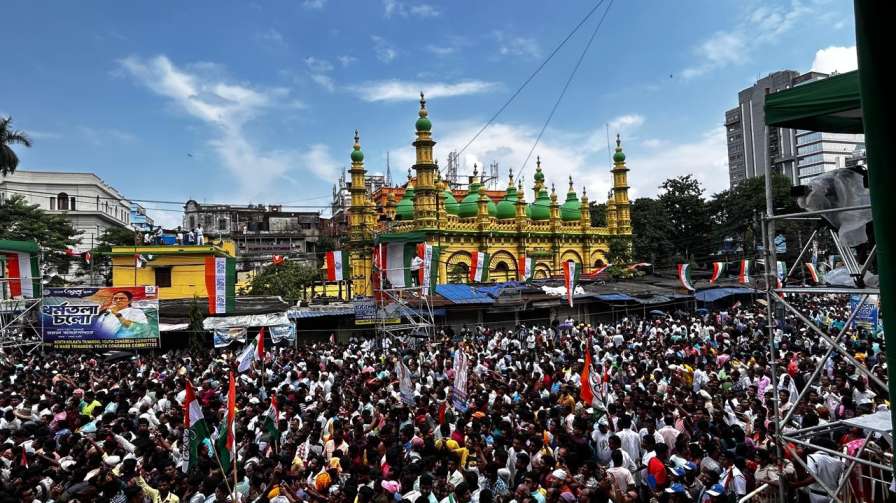West Bengal Chief Minister Mamata Banerjee today unveiled an aggressive political strategy for the 2026 assembly elections, framing the upcoming polls not merely as a contest for power but as a cultural and linguistic battle for Bengali identity against the BJP’s perceived Hindi-belt hegemony. Her address was a calculated move to mobilise the Trinamool Congress (TMC) cadre and electorate around a narrative that seeks to outmaneuver the BJP’s Hindutva plank by shifting the ideological battleground to regional pride and perceived federal injustices.
The “Jai Bangla” Challenge: A Symbolic Reclaim
Banerjee’s assertion that she aims to force the BJP to chant “Jai Bangla” is highly symbolic. It directly confronts the BJP’s successful deployment of “Jai Shri Ram” as a political slogan, which resonated strongly in other parts of India. The BJP’s recent adoption of “Jai Maa Durga” and “Jai Maa Kaali” in Bengal is an acknowledgment of the region’s distinct spiritual reverence, a tactical adaptation to the local religious landscape.
Banerjee’s counter-narrative, by pushing for “Jai Bangla,” seeks to elevate regional identity above religious majoritarianism, challenging the BJP on its own terms within Bengal’s cultural context. Her development of “Jagannath Dham” and plans for “Durga Angan” further cement her image as a protector and promoter of Bengali spiritual heritage, preempting potential BJP accusations of being anti-Hindu.
The Language War: A Strategic Mobilisation
The core of Banerjee’s 2026 strategy appears to be the “language war” narrative. By alleging systematic targeting of Bengali-speaking immigrant laborers and attempts to delete names from voter lists, she is tapping into a deeply emotional vein of regional pride and fears of marginalization.
This strategy aims to:
• Consolidate Bengali Vote Bank: By portraying the BJP as anti-Bengali, she seeks to unite diverse Bengali-speaking communities, including those who might have previously voted for the BJP based on other issues.
• Create an “Us vs. Them” Dynamic: The narrative of immigrant Bengali laborers being targeted creates an “insider-outsider” binary, positioning the TMC as the protector of Bengalis and the BJP as an external threat. This can be a potent electoral tool, as seen in previous elections.
• Humanize Policy Debates: Allegations of harassment and deportation bring a human element to abstract policy discussions like the NRC and CAA, making them more visceral and relatable to the common voter. Her recounting of the “two girls” incident, with one under CBI investigation, serves to personalize the alleged injustices.

Voter List Deletion: Raising the Stakes of Democratic Integrity
Banerjee’s strong allegations regarding the systematic deletion of names from voter lists, coupled with her claims of central government pressure to form nodal officers for this purpose, introduce a significant element of democratic integrity into the electoral discourse.
• Questioning Electoral Fairness: By accusing the Election Commission (ECI) of acting at the BJP’s behest and citing alleged irregularities in Bihar, she is attempting to cast doubt on the fairness of the electoral process itself. This can mobilize her cadre for vigilance during the election period and generate public skepticism towards any adverse outcomes.
• Direct Challenge to Central Authority: Her outright refusal to allow a “single name” to be cut and her threat of “massive protest” is a direct challenge to the Central government’s perceived overreach and interference in state affairs. This plays into the TMC’s long-standing narrative of protecting Bengal’s autonomy.
Beyond Bengal: A National Ambition
While the immediate focus is 2026, Banerjee’s declaration of a fight for “Delhi to remove BJP” reveals her larger national aspirations. Her call for a “khela hobey again” and aiming for a “sixer” against the BJP, combined with the vision of “Parivartan in Delhi,” indicates a strategic intent to project herself as a key opposition figure on the national stage. Her references to alleged issues in Delhi, Odisha, and Kashmir, and her direct challenge to the Assam Minister, further underscore this broader political horizon.
Mamata Banerjee’s bold and multi-faceted strategy for 2026 demonstrates a clear understanding of the emotional and cultural dynamics of West Bengal politics. By intertwining regional identity, democratic rights, and a strong anti-Centre stance, she aims to create an impenetrable fortress of Bengali sentiment that the BJP will find difficult to breach.
The success of this strategy will depend on the TMC’s ability to sustain public mobilization and the BJP’s capacity to offer a compelling counter-narrative that resonates with the diverse electorate of West Bengal. The battle for “Jai Bangla” versus “Jai Shri Ram” (or “Jai Maa Durga”) is set to define the next electoral chapter in the state.
Long or Short, get news the way you like. No ads. No redirections. Download Newspin and Stay Alert, The CSR Journal Mobile app, for fast, crisp, clean updates!
App Store – https://apps.apple.com/in/app/newspin/id6746449540
Google Play Store – https://play.google.com/store/apps/details?id=com.inventifweb.newspin&pcampaignid=web_share


